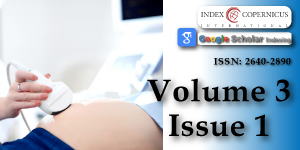Trial of labor after cesarean outcomes with excessive gestational weight gain
Main Article Content
Abstract
The success of vaginal birth after cesarean section (VBAC) has been correlated with a variety of maternal characteristics such as age, ethnicity, and body mass index (BMI, calculated as weight in kilograms divided by height in meters squared). The patient’s BMI just prior to delivery has been shown to be a better prognostic indicator of success than pre-pregnancy BMI. Gestational weight gain was previously associated with a decreased rate of successful VBAC. More recent research has not supported such an association. The objective of our study was to further validate these findings with a larger population.
We performed a retrospective cohort study of women undergoing trial of labor after cesarean (TOLAC) at our institution from January 2010 to December 2019. Women were divided into three groups based on weight gain in pregnancy as compared to the American College of Obstetrics and Gynecology (ACOG) recommendations (i.e. < 25 pounds (lbs), 25-35 lbs, > 35 lbs). We further subdivided the pregnancies between term and preterm deliveries. The primary outcome was a successful VBAC. Of 1087 patients attempting a TOLAC, 772 (71%) were successful and 315 (29%) failed VBAC. When grouped according to ACOG weight gain recommendations, 303 (31%) women were below ACOG guidelines, 318 (33%) met guidelines, and 339 (35%) exceeded guidelines. There was no difference in the rate of VBAC success among the three groups. When counseling patients, providers should still promote healthy dietary habits but should not correlate excess weight gain with chance of TOLAC success.
Article Details
Copyright (c) 2020 Halassy S, et al.

This work is licensed under a Creative Commons Attribution 4.0 International License.
Institute of Medicine and National Research Council Committee to Reexamine IOMPWG. The National Academies Collection: Reports funded by National Institutes of Health. In: Rasmussen, KM, Yaktine AL, editors. Weight Gain during Pregnancy: Reexamining the Guidelines. Washington (DC): National Academies Press (US) National Academy of Sciences; 2009.
Margerison Zilko CE, Rehkopf D, Abrams B. Association of maternal gestational weight gain with short- and long-term maternal and child health outcomes. Am J Obstet Gynecol. 2010; 202: 574.e1-8. PubMed: https://www.ncbi.nlm.nih.gov/pubmed/20132923
Jensen DM, Ovesen P, Beck-Nielsen H, Molsted-Pedersen L, Sorensen B, et al. Gestational weight gain and pregnancy outcomes in 481 obese glucose-tolerant women. Diabetes Care. 2005; 28: 2118-2122. PubMed: https://www.ncbi.nlm.nih.gov/pubmed/16123476
Machado LS. Cesarean section in morbidly obese parturients: practical implications and complications. N Am J Med Sci. 2012; 4: 13-18. PubMed: https://www.ncbi.nlm.nih.gov/pubmed/22393542
Brost BC, Goldenberg RL, Mercer BM, Iams JD, et al. The Preterm Prediction Study: association of cesarean delivery with increases in maternal weight and body mass index. Am J Obstet Gynecol. 1997; 177: 333-337. PubMed: https://www.ncbi.nlm.nih.gov/pubmed/9290448
Tanentsapf I, Heitmann BL, Adegboye AR. Systematic review of clinical trials on dietary interventions to prevent excessive weight gain during pregnancy among normal weight, overweight and obese women. BMC Pregnancy Childbirth. 2011; 11: 81. PubMed: https://www.ncbi.nlm.nih.gov/pubmed/22029725
Curtin SC, Gregory KD, Korst LM, Uddin SF. Maternal Morbidity for Vaginal and Cesarean Deliveries, According to Previous Cesarean History: New Data From the Birth Certificate, 2013. Natl Vital Stat Rep. 2015; 64: 1-13. PubMed: https://www.ncbi.nlm.nih.gov/pubmed/26046963
Clark SL, Hankins GD. Temporal and demographic trends in cerebral palsy-fact and fiction. Am J Obstet Gynecol. 2003; 188: 628-633. PubMed: https://www.ncbi.nlm.nih.gov/pubmed/12634632
Menacker F, Curtin SC. Trends in cesarean birth and vaginal birth after previous cesarean. 1991-99. Natl Vital Stat Rep. 2001; 49: 1-16. PubMed: https://www.ncbi.nlm.nih.gov/pubmed/11793867
Scheller JM, Nelson KB. Does cesarean delivery prevent cerebral palsy or other neurologic problems of childhood? Obstet Gynecol. 1994; 83: 624-630. PubMed: https://www.ncbi.nlm.nih.gov/pubmed/8134078
Grobman WA, Lai Y, Landon MB, Spong CY, Leveno KJ, et al. Development of a nomogram for prediction of vaginal birth after cesarean delivery. Obstet Gynecol. 2007; 109: 806-812. PubMed: https://www.ncbi.nlm.nih.gov/pubmed/17400840
Durnwald CP, Ehrenberg HM, Mercer BM. The impact of maternal obesity and weight gain on vaginal birth after cesarean section success. Am J Obstet Gynecol. 2004; 191: 954-957. PubMed: https://www.ncbi.nlm.nih.gov/pubmed/15467571
Juhasz G, Gyamfi C, Gyamfi P, Tocce K, Stone JL. Effect of body mass index and excessive weight gain on success of vaginal birth after cesarean delivery. Obstet Gynecol. 2005; 106: 741-746. PubMed: https://www.ncbi.nlm.nih.gov/pubmed/16199630
Hibbard JU, Gilbert S, Landon MB, Hauth JC, Leveno KJ, et al. Trial of labor or repeat cesarean delivery in women with morbid obesity and previous cesarean delivery. Obstet Gynecol. 2006; 108: 125-133. PubMed: https://www.ncbi.nlm.nih.gov/pubmed/16816066
Mei JY, Havard AL, Mularz AJ, Maykin MM, Gaw SL, et al. Impact of Gestational Weight Gain on Trial of Labor after Cesarean Success. Am J Perinatol. 2019, 36: 1023-1030. PubMed: https://www.ncbi.nlm.nih.gov/pubmed/30500964
Corp I. IBM SPSS Statistics for Windows. 23 ed: IBM Corp.; 2015.
Martin JA, Hamilton BE, Osterman MJK. Births in the United States 2018. NCHS Data Brief. 2019: 1-8. PubMed: https://www.ncbi.nlm.nih.gov/pubmed/31442195

